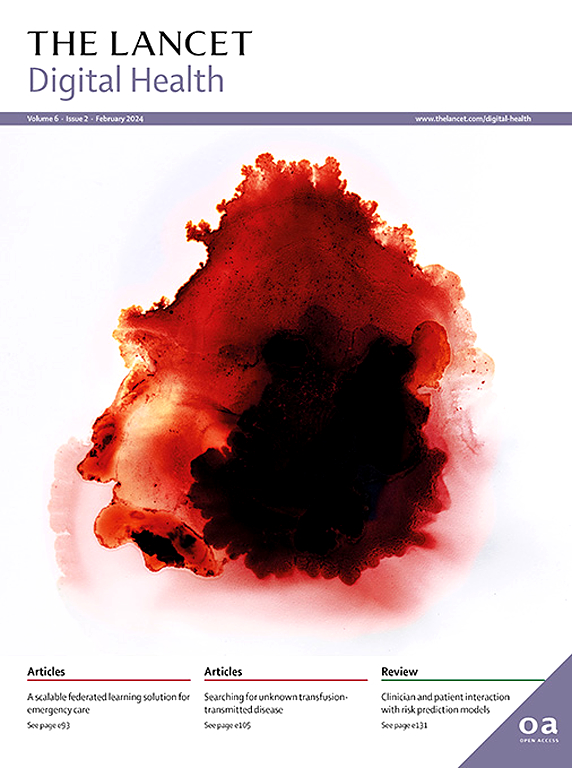用于择期手术前估计术后肺部并发症风险的预后模型(GSU-肺部评分):在三个国际队列中进行的开发和验证研究
摘要
背景肺部并发症是手术后最常见的死亡原因。本研究旨在推导并从外部验证一种新型预后模型,该模型可在择期手术前用于估计术后肺部并发症的风险,并支持大流行病恢复期间的资源分配和优先级排序。方法:利用一项国际前瞻性队列研究的数据,为所有手术和疾病类型的成年患者(年龄≥18 岁)的择期手术后肺部并发症建立一种新型预后风险模型。主要结果指标是术后 30 天的术后肺部并发症,即肺炎、急性呼吸窘迫综合征和意外机械通气的综合结果。在 GlobalSurg-CovidSurg Week 数据集(全球;2020 年 10 月)中使用候选预测变量进行了模型开发。研究人员探索了两种结构化机器学习技术(XGBoost 和最小绝对收缩和选择算子 [LASSO]),并使用引导重采样对性能最佳的模型(GSU-肺部评分)进行了内部验证。在另外两个前瞻性队列中对该评分的判别和校准进行了外部验证:CovidSurg-Cancer(全球;2020 年 2 月至 8 月,COVID-19 大流行期间)和 RECON(英国和澳大拉西亚;2019 年 1 月至 10 月,COVID-19 大流行之前)。该模型以在线网络应用程序的形式部署。GlobalSurg-CovidSurg Week和CovidSurg-Cancer研究已在ClinicalTrials.gov(NCT04509986和NCT04384926)上注册。研究结果根据来自86231名患者(114个国家的1158家医院)的数据中的13个候选预测变量建立了诊断模型。外部验证包括来自CovidSurg-Cancer(75个国家的726家医院)的30 492名患者和来自RECON(3个国家的150家医院)的6 789名患者。在推导数据中,肺部并发症的总发生率为2-0%,而在验证数据集中,肺部并发症的发生率分别为3-9%(CovidSurg-Cancer)和4-7%(RECON)。使用 LASSO 进行的惩罚回归与 XGBoost 具有相似的区分度(接收器工作曲线下面积 [AUROC] 0-786, 95% CI 0-774-0-798 vs 0-785, 0-772-0-797),可解释性更高,所需的协变量更少。最终的 GSU-Pulmonary Score 包括 10 个预测变量,在内部验证中显示出良好的区分度和校准性(AUROC 0-773,95% CI 0-751-0-795;Brier score 0-020,calibration in the large [CITL] 0-034,斜率 0-954)。该模型在 CovidSurg-Cancer 的外部验证中表现尚可(AUROC 0-746,95% CI 0-733-0-760;Brier 评分 0-036,CITL 0-109,斜率 1-056),但在 RECON 数据中存在一些校准误差(AUROC 0-716,95% CI 0-689-0-744;Brier 评分 0-045,CITL 1-040,斜率 1-009)。解释:这一新颖的预后风险评分使用了在决定进行择期手术时可用的简单预测变量,可以准确地对患者术后肺部并发症的风险进行分层,包括在 SARS-CoV-2 爆发期间。随着择期手术规模的扩大,它可以为手术同意、资源分配和医院层面的优先次序提供信息,以解决全球积压的问题。Background
Pulmonary complications are the most common cause of death after surgery. This study aimed to derive and externally validate a novel prognostic model that can be used before elective surgery to estimate the risk of postoperative pulmonary complications and to support resource allocation and prioritisation during pandemic recovery.
Methods
Data from an international, prospective cohort study were used to develop a novel prognostic risk model for pulmonary complications after elective surgery in adult patients (aged ≥18 years) across all operation and disease types. The primary outcome measure was postoperative pulmonary complications at 30 days after surgery, which was a composite of pneumonia, acute respiratory distress syndrome, and unexpected mechanical ventilation. Model development with candidate predictor variables was done in the GlobalSurg-CovidSurg Week dataset (global; October, 2020). Two structured machine learning techniques were explored (XGBoost and the least absolute shrinkage and selection operator [LASSO]), and the model with the best performance (GSU-Pulmonary Score) underwent internal validation using bootstrap resampling. The discrimination and calibration of the score were externally validated in two further prospective cohorts: CovidSurg-Cancer (worldwide; February to August, 2020, during the COVID-19 pandemic) and RECON (UK and Australasia; January to October, 2019, before the COVID-19 pandemic). The model was deployed as an online web application. The GlobalSurg-CovidSurg Week and CovidSurg-Cancer studies were registered with ClinicalTrials.gov, NCT04509986 and NCT04384926.
Findings
Prognostic models were developed from 13 candidate predictor variables in data from 86 231 patients (1158 hospitals in 114 countries). External validation included 30 492 patients from CovidSurg-Cancer (726 hospitals in 75 countries) and 6789 from RECON (150 hospitals in three countries). The overall rates of pulmonary complications were 2·0% in derivation data, and 3·9% (CovidSurg-Cancer) and 4·7% (RECON) in the validation datasets. Penalised regression using LASSO had similar discrimination to XGBoost (area under the receiver operating curve [AUROC] 0·786, 95% CI 0·774–0·798 vs 0·785, 0·772–0·797), was more explainable, and required fewer covariables. The final GSU-Pulmonary Score included ten predictor variables and showed good discrimination and calibration upon internal validation (AUROC 0·773, 95% CI 0·751–0·795; Brier score 0·020, calibration in the large [CITL] 0·034, slope 0·954). The model performance was acceptable on external validation in CovidSurg-Cancer (AUROC 0·746, 95% CI 0·733–0·760; Brier score 0·036, CITL 0·109, slope 1·056), but with some miscalibration in RECON data (AUROC 0·716, 95% CI 0·689–0·744; Brier score 0·045, CITL 1·040, slope 1·009).
Interpretation
This novel prognostic risk score uses simple predictor variables available at the time of a decision for elective surgery that can accurately stratify patients’ risk of postoperative pulmonary complications, including during SARS-CoV-2 outbreaks. It could inform surgical consent, resource allocation, and hospital-level prioritisation as elective surgery is upscaled to address global backlogs.
Funding
National Institute for Health Research.

 求助内容:
求助内容: 应助结果提醒方式:
应助结果提醒方式:


